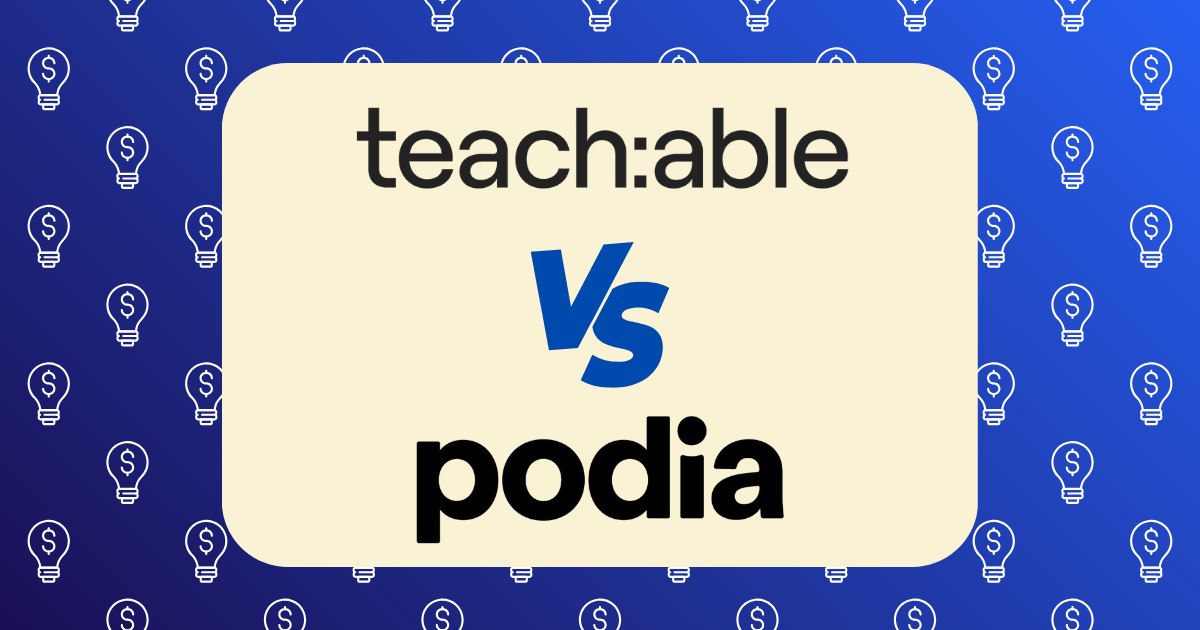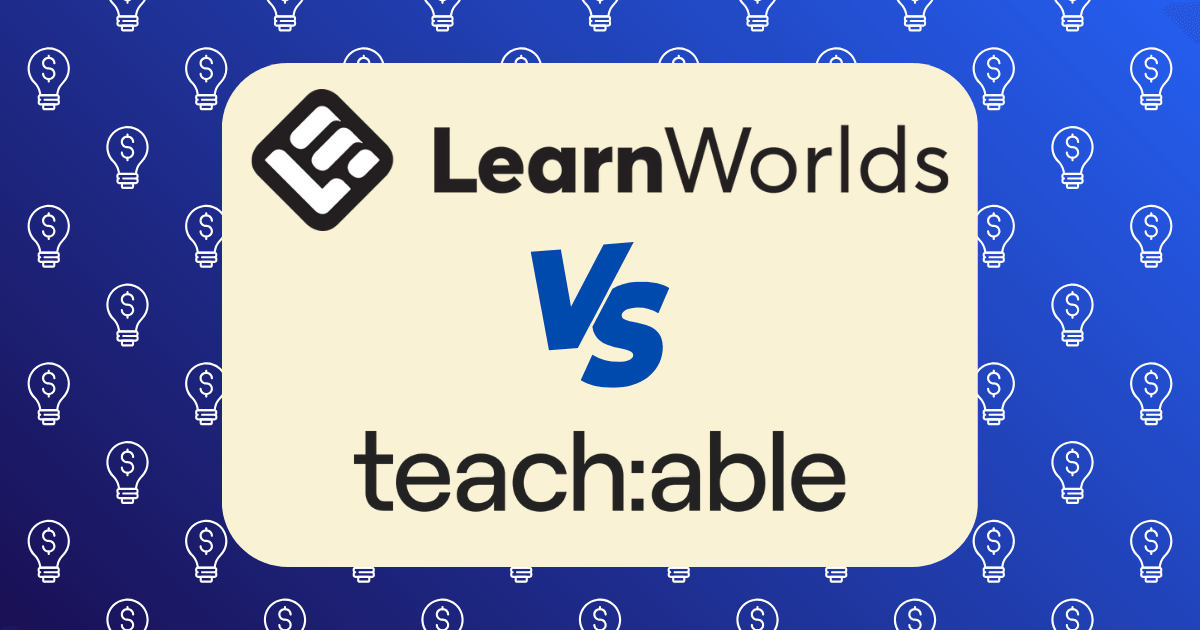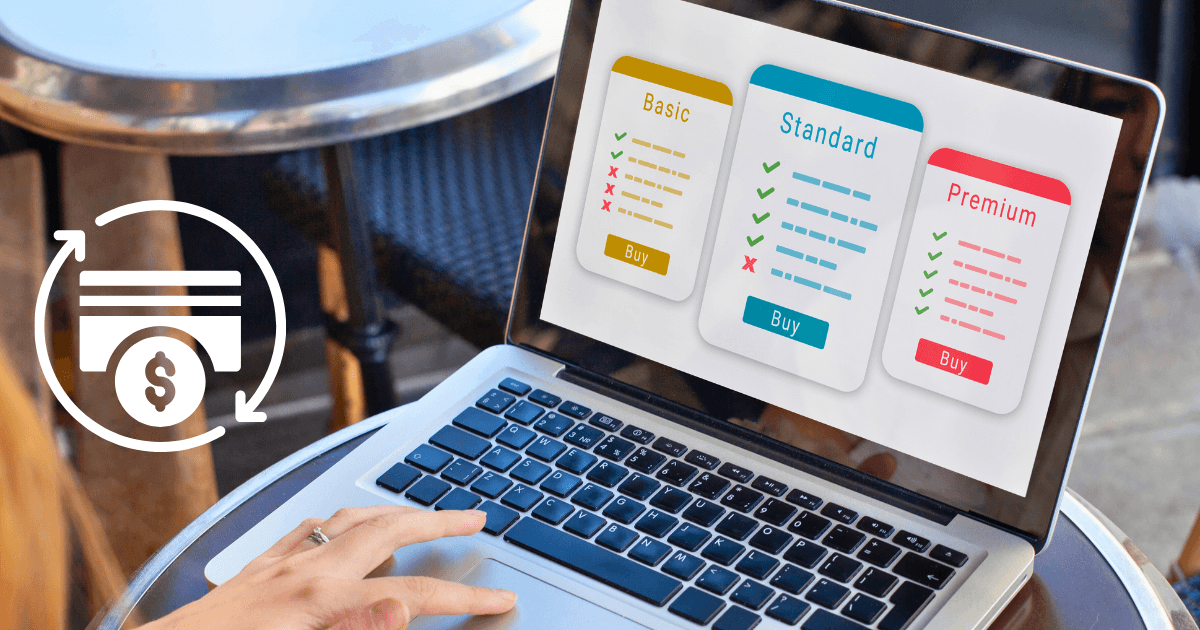Podia vs Teachable: All-in-One Platform Showdown for Digital Product Creators

In the rapidly evolving digital economy, the right platform can be the difference between a struggling side hustle and a thriving online business. As someone who has built multiple six-figure digital product businesses, I’ve learned that your choice of platform isn’t just a technical decision—it’s a strategic one that impacts your entire business model.
Today, we’re comparing two heavyweight contenders in the digital product space: Podia and Teachable. Both launched in 2014, both claim to be all-in-one solutions, but which one will actually accelerate your path to financial freedom? Let’s break down this showdown from every angle that matters to serious digital entrepreneurs.
The Creator Economy: Why Your Platform Choice Matters
Before diving into the specifics, let’s address the elephant in the room: the platform you choose directly impacts your profit margins, customer experience, and scaling potential. According to Creator Economy Insights, the global creator economy is projected to exceed $300 billion by 2026, with digital products representing one of the highest-margin segments.
Your platform isn’t just where you host content—it’s the foundation of your digital empire.
Pricing Structure: The True Cost of Business
Podia’s Pricing Model
Podia offers a straightforward pricing structure:
- Mover Plan: $39/month (or $33/month billed annually) with a 5% transaction fee
- Shaker Plan: $89/month (or $75/month billed annually) with 0% transaction fees
What’s impressive is that Podia doesn’t impose limits on your courses, downloads, coaching sessions, or webinars on any plan. This unlimited approach means your business can scale without unexpected platform limitations.
Teachable’s Pricing Model
Teachable’s pricing is more complex:
- Free Plan: 10% transaction fee + $1 per sale (limited features)
- Basic Plan: $59/month (or $39/month annually) with 5% transaction fee
- Professional Plan: $159/month (or $119/month annually)
- Pro Plus Plan: $249/month (or $199/month annually)
- Business Plan: $665/month (or $499/month annually)
Only Teachable’s Business plan offers truly unlimited products. This tiered limitation could become problematic as your digital product catalog expands.
Strategic Insight: Transaction fees directly eat into your profit margins. For creators selling over $2,000/month in products, Podia’s Shaker plan with zero transaction fees often proves more economical than Teachable’s comparable offerings.
Product Versatility: Beyond Just Courses
What You Can Sell on Podia
Podia positions itself as a true all-in-one platform, allowing you to sell:
- Online courses with multimedia content
- Digital downloads (ebooks, templates, software)
- Membership subscriptions
- Coaching services
- Webinars and online events
- Product bundles
The platform also includes a built-in community feature, enabling you to create exclusive spaces for your customers—a powerful tool for retention and recurring revenue.
What You Can Sell on Teachable
Teachable’s primary focus is courses, though it has expanded to include:
- Online courses
- Coaching services
- Digital downloads
- Basic membership features
While Teachable excels in the course department with its robust course builder, it lacks the product diversity that Podia offers. According to Digital Course Experts, diversified product offerings can increase average customer lifetime value by up to 40%.
Technical Capabilities: The Engine Behind Your Products
Content Delivery and File Limitations
Podia supports file uploads up to 5GB, while Teachable caps at 2GB. This might seem minor until you’re creating high-definition video courses or comprehensive resource bundles.
Course Creation Tools
Teachable offers a polished drag-and-drop course builder with support for:
- Video lectures
- PDF attachments
- Text lessons
- Quizzes and assignments
- Completion certificates
Podia’s course builder is more straightforward but includes:
- Basic quizzes
- Completion certificates
- Drip scheduling (though limited to N-day triggers)
- Embedded content from third-party platforms
Teachable edges out slightly in course functionality, particularly with its graded quizzes and more granular drip content controls.
Marketing Capabilities: Turning Visitors Into Customers
Email Marketing
One of Podia’s standout features is its built-in email marketing suite, included on all plans. This allows you to:
- Send newsletters to subscribers
- Create automated email sequences
- Segment your audience
- Track open and click rates
Teachable’s email capabilities are more limited, often requiring integration with external email services like ConvertKit or ActiveCampaign for serious email marketing.
Affiliate Marketing
Both platforms offer affiliate programs, but with different approaches:
- Podia includes affiliate marketing on its Shaker plan, with unlimited affiliates and flexible commission tiers
- Teachable restricts affiliate features to its Professional plan and above
According to Affiverse Media, affiliate marketing can drive 15-30% of digital product sales when properly implemented.
User Experience: For You and Your Students
Creator Experience
Podia is known for its clean, intuitive interface. The dashboard is straightforward, making it accessible even for non-technical creators. Teachable offers more customization options but comes with a steeper learning curve.
Student Experience
Teachable stands out with its mobile app, allowing students to access content offline—a significant advantage for course consumption. Podia lacks a dedicated mobile app but offers a mobile-responsive experience.
Community and Engagement Features
Podia has integrated community forums and messaging systems, allowing you to build an engaged audience directly on your platform. Teachable’s community features are still in beta as of 2025, leaving it behind in this increasingly important aspect of digital products.
According to Community Building Insights, products with integrated community elements show 35% higher retention rates than standalone digital products.
Analytics and Business Intelligence
Understanding your business performance is crucial for optimization:
- Podia offers basic analytics covering sales, traffic sources, and affiliate performance
- Teachable provides more comprehensive data including student engagement metrics, completion rates, and detailed revenue reporting
For data-driven creators, Teachable’s analytics suite offers more actionable insights.
Payment Processing and Payouts
Payment Options
- Podia: Stripe and PayPal with instant payouts
- Teachable: Stripe, PayPal, and Teachable Payments with daily payouts on paid plans
Tax Handling
Teachable automatically handles VAT/sales tax calculations, while Podia requires third-party integrations for comprehensive tax management.
Support and Resources
Support can make or break your experience with any platform:
- Podia offers 7-day-a-week email support with quick response times
- Teachable provides live chat support, but only on Professional plans and above
Additionally, Podia offers free migration services when switching from another platform—a valuable offering if you’re considering a move from an existing setup.
Making Your Decision: Strategic Considerations
Your platform choice should align with your business model and growth strategy. Consider these factors:
- Product Diversity: If you plan to sell various digital products beyond courses, Podia’s versatility gives you room to expand.
- Scale Economics: Calculate your expected transaction volume and compare the effective costs including transaction fees.
- Technical Requirements: If you need advanced course features like graded assignments, Teachable might be worth the higher price.
- Marketing Integration: Consider whether built-in marketing tools (Podia’s strength) or extensive third-party integrations (Teachable’s approach) better suit your strategy.
- Mobile Learning: If your audience primarily consumes content on mobile devices, Teachable’s app could be a deciding factor.
The Verdict: Who Should Choose Which Platform?
Choose Podia if:
- You want to sell diverse digital products beyond just courses
- Built-in email marketing and community features are priorities
- You prefer a simpler, more intuitive interface
- You want to avoid transaction fees on your sales
- You’re building a membership or community-based business model
Choose Teachable if:
- Your primary focus is creating professional-grade courses
- You need advanced quiz and assignment capabilities
- Mobile learning access is essential for your audience
- You require detailed analytics on student behavior
- You have technical resources to maximize customization options
Beyond the Platform: Remember the Fundamentals
While your platform choice is important, remember that the most critical factors in digital product success remain:
- Creating genuinely valuable content that transforms your customers’ lives
- Building an engaged audience through consistent value delivery
- Developing a marketing system that converts prospects to customers
- Optimizing your offers based on customer feedback and data
As Digital Product Masters notes, “The platform is just the vehicle—your expertise and marketing are the engine.”
Final Thoughts: Investment vs. Return
View your platform choice as an investment in your business infrastructure. The right choice isn’t necessarily the cheapest option—it’s the one that provides the best return on investment by supporting your specific business model and growth trajectory.
Whether you choose Podia or Teachable, commit to mastering the platform’s capabilities. The most successful digital entrepreneurs don’t just use these tools—they leverage every feature to create exceptional customer experiences and maximize their revenue potential.
Your digital product business is a vehicle for both impact and income. Choose the platform that will help you achieve both at the highest level.
Have you used either Podia or Teachable for your digital products? What has your experience been? Share in the comments below.







